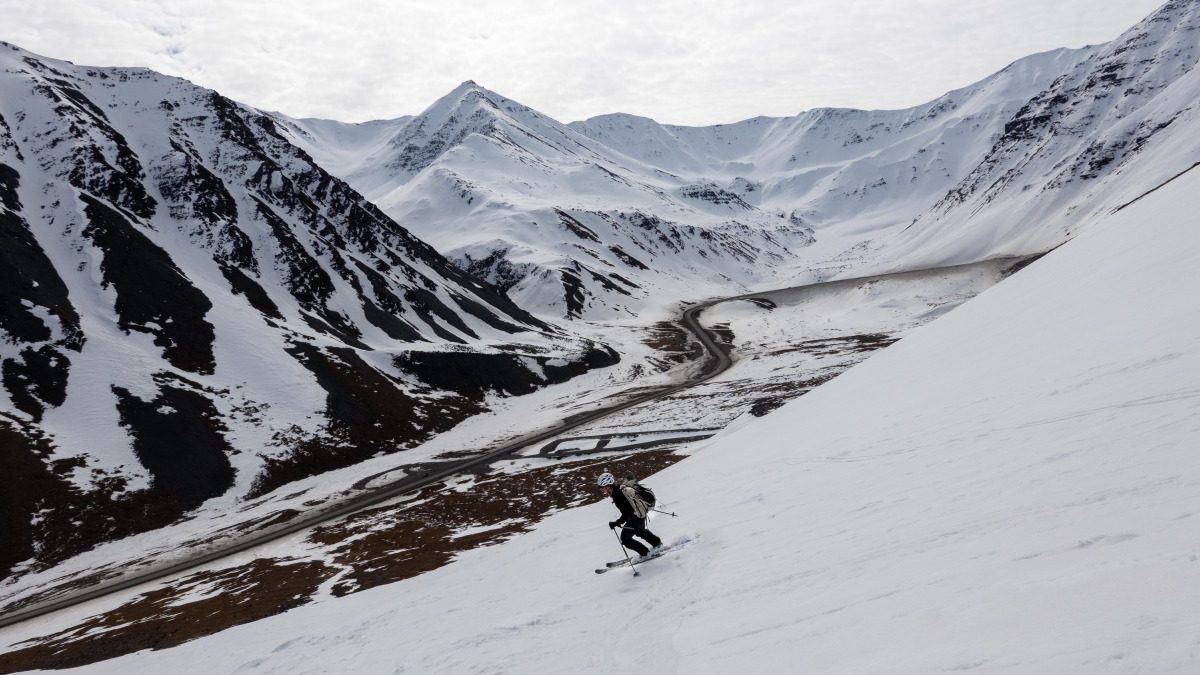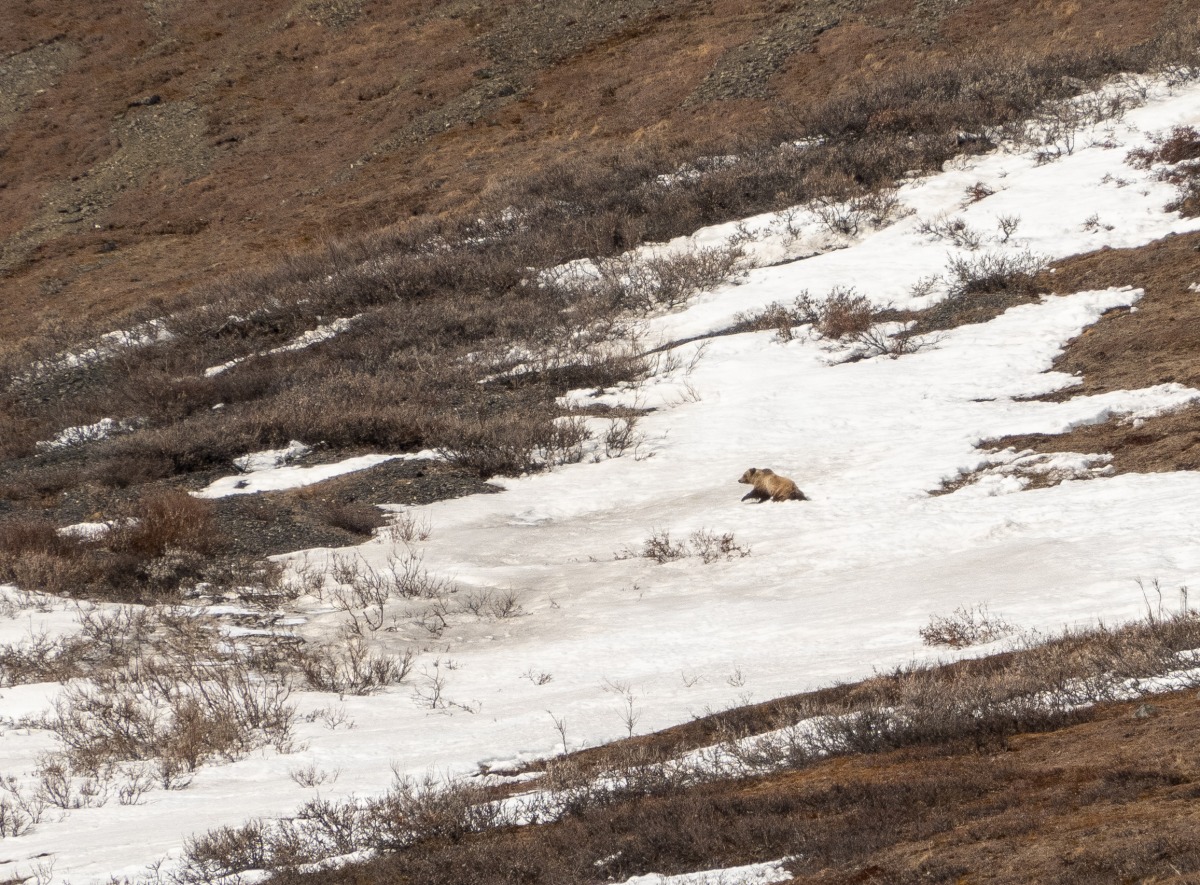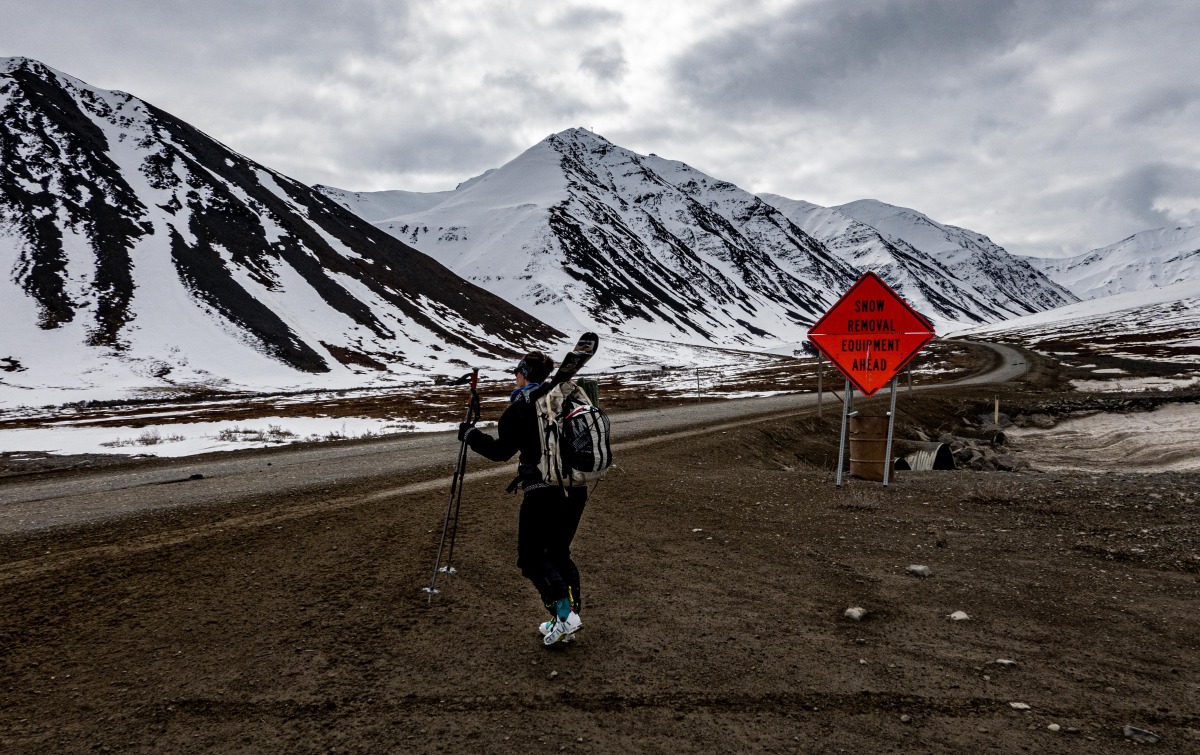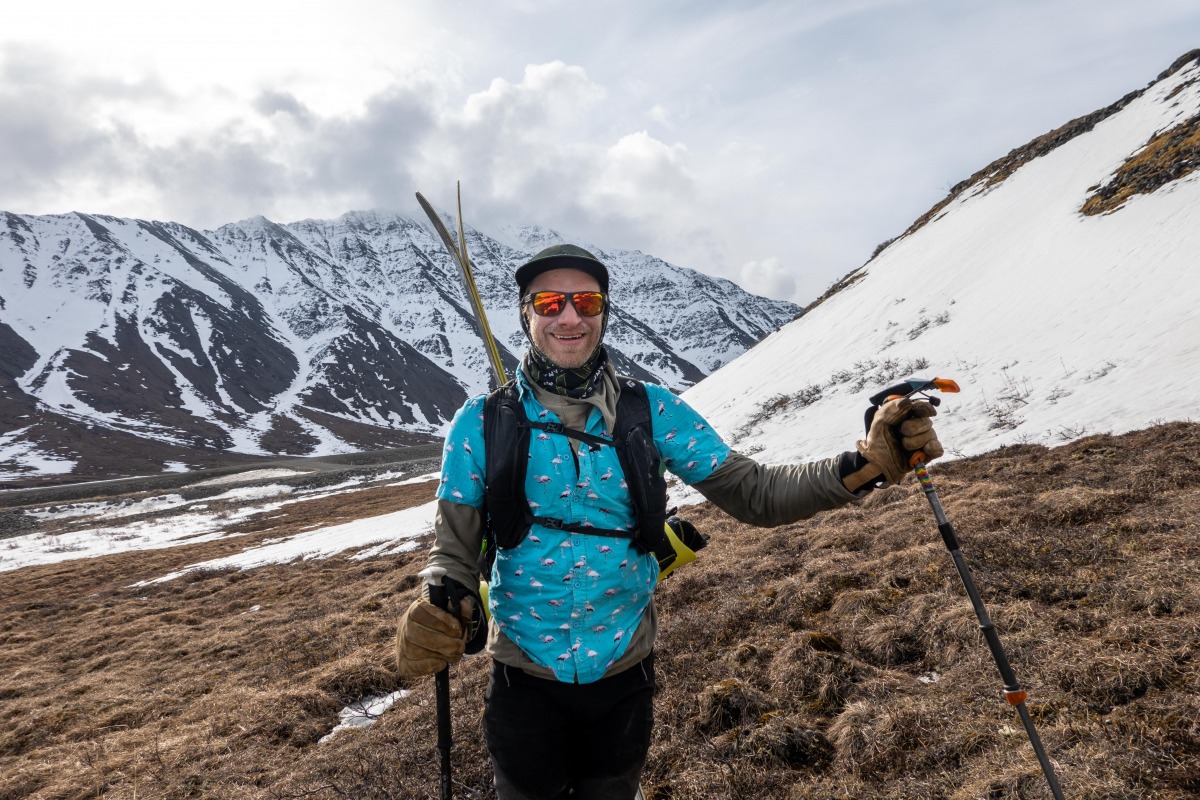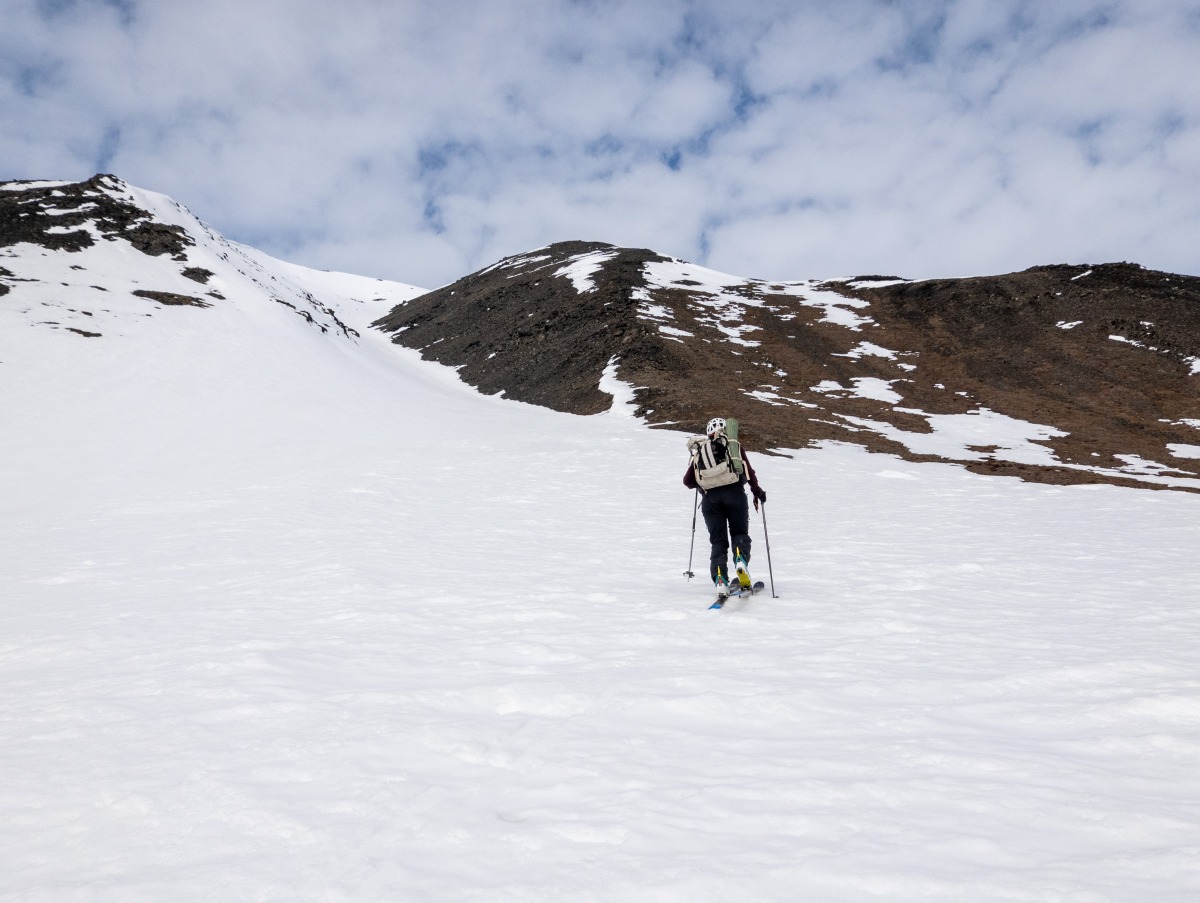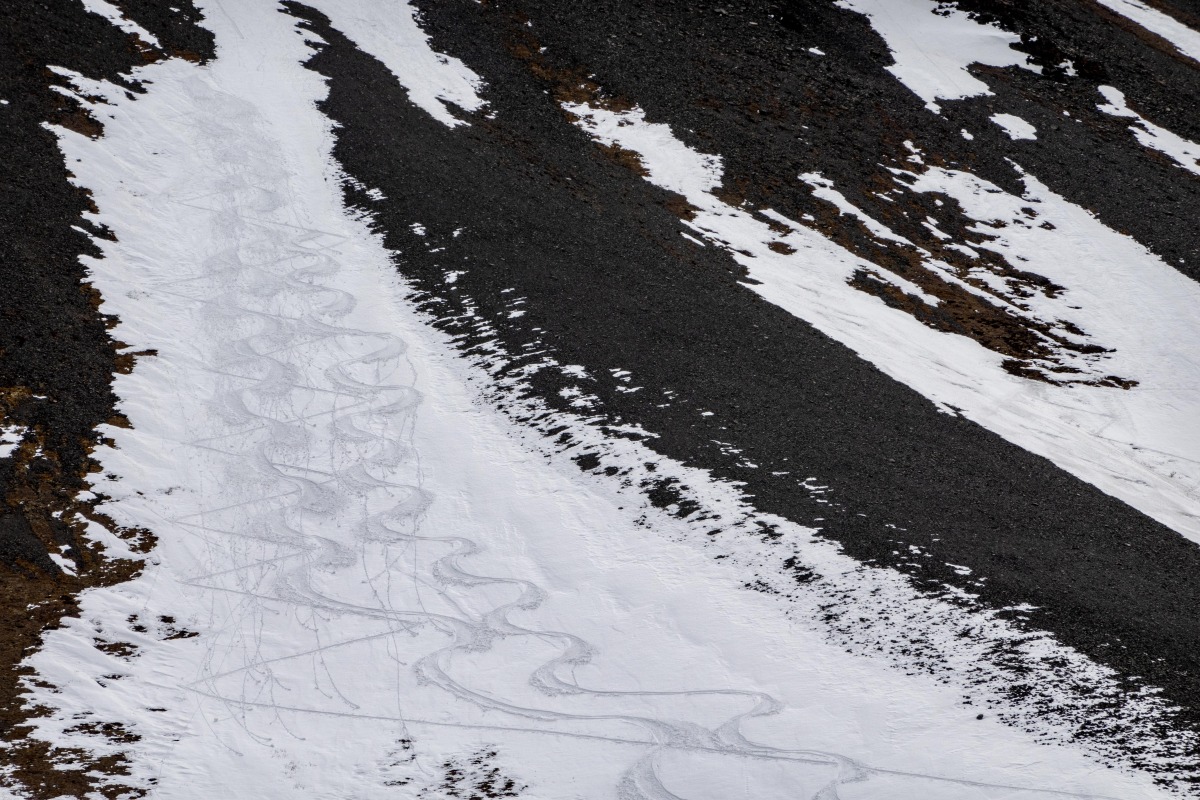Big thanks to onX Backcountry for sponsoring this post. Plan your next adventure with 20% off your app subscription. Use the code WILDSNOW20 at checkout.
It’s raining right now. The last of this season’s snow is quickly washing away from the mountains outside my cabin window. A wet packraft sits in my truck, flip flops are by the door, and I don’t even know where my headlamps are. Summer, it seems, is an inescapable fact of life. This however, does not mean that skis have no place on the docket (I don’t really believe in storage wax). Alaska saw a solid snowpack followed by a late spring this year, opening up ample opportunities for one of my favorite activities – chasing snow.
Like a game of hide-and-seek, ski turns tuck into nooks and crannies, run upstairs into the mountains, and hide in well-guarded icefields, but if you know where to look, they are there. Last month, as isothermal barely frozen water showed up in Southcentral Alaska, I checked the cupboards and closets for hidden pow, looked in the crawl space for unharvested corn, and even crawled under the deck for any signs of crust. The game was afoot, and a worthy opponent knows how to make you work for it. This year, the snow led me north. Way north. Fifteen hours in the truck from Anchorage, greening trees, bursting buds, and singing birds whispered, “the snow went that way…” Finally, there it was in the Arctic.
I have always found that a positive attitude and a high latitude go hand-in-hand. If you have not experienced this phenomenon, go to the Brooks Range. This ancient geologic remnant of the ancestral Rocky Mountains is not a land before time, but a land beyond it. Towering limestone, craggy ridge tops, sweeping tundra slopes, and the midnight sun make it a place like no other. Were a mammoth, or a dinosaur, or a centaur to walk by in the Brooks, I would not look up in astonishment. Instead, the astonishment with which I was already gazing at the landscape would continue unabated, and I would think, “well yea, that figures.”
My wife and I spent six days camped by the road at the edge of the world. We saw three bears, followed wolf tracks, watched an eagle hunting arctic ground squirrels, heard a muskox grunting at 4 am, and skied the last of the pow and first of the corn.
The Brooks Range runs from western Alaska into the Yukon for 700 miles. There is one road that crosses the range. The Dalton Highway, made famous by season three of Ice Road Truckers, is maintained for year round access to the Prudhoe Bay oil fields. At 4,739 ft, Antigun Pass sits 130 miles north of the Arctic Circle, atop the road corridor. Couloirs drop to the road, the nearest tree is miles to the south, and ski terrain is everywhere.
Fickle weather, fickler snow conditions, and the easiest access being a nine hour drive from Fairbanks keeps this location off most skiers’ radar. I’d been up to the Brooks a few times in the summer, but this was my first spring trip with skis in hand.
Our first night camped by the road was quiet. A few trucks rolled by on their way north as a light snow fell. We headed up a north facing shoulder in the morning. To our amazement, facets still sat below a stiff crust.
“Woomf!”
We quickly retreated down the ridge on the recommendation of arcing shooting cracks. Across the road, we donned ski crampons and headed up a west facing gully for perfect spring corn, transitioning at the top of the slope on top of the first bear tracks of the year.
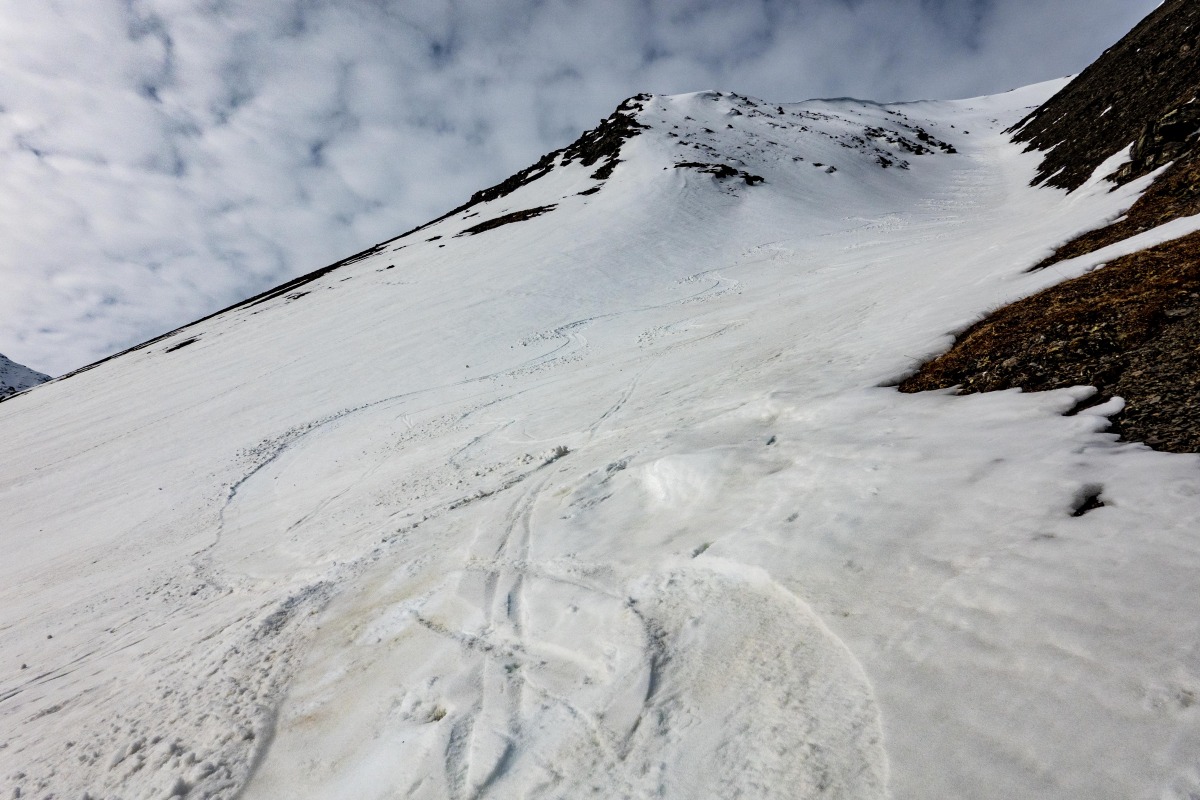
The top of this run was pow, the bottom was corn…it look short on the approach, but ended up being 2000 ft from snow line to the ridge…
Just a few miles away, the Arctic National Wildlife Refuge stretched out across 19.2 million acres to the Arctic Ocean. The Refuge has been at the center of a conservation battle for decades. As nearby Prudhoe Bay oil wells have begun to dry up, many Alaskan politicians and industry developers have looked to the Refuge for the next big windfall. The story of this place runs far beyond oil — I for one think the greatest resource in this corner of Alaska is not underground, but in the land, wildlife, and wildness. Places like ANWR often get discussed as though they are mythical locales arrived at by riding a unicorn along some yellow brick road from Camelot, but you can just hop in a car and drive there (or at least pretty darn close).
The next few days we found summer on Souths, winter on Northwests, spring on Wests and Easts, bears on all aspects, and plenty of sunshine. Runs were between a couple hundred and a couple thousand feet long. We skied and explored.
Clouds set back in, but this time it rained. The game of hide-and-seek was on again. We headed back south to start the search over. Fortunately, we have plenty of places to look.
Gas and burgers are available some 60 miles south of Atigun in Coldfoot. We found great terrain from the Chandalar Shelf to the Atigun River. There is no guidebook. There is no avalanche forecast. There is no local ski ‘scene,’ few peaks don names, and trip reports are nearly non-existent. Just head north and then keep going north.
Dr. Alex Lee lives in Anchorage, Alaska. Alex is a professor at Alaska Pacific University, teaching philosophy and environmental studies. He also works as a sometimes guide, naturalist, writer, and photographer.

